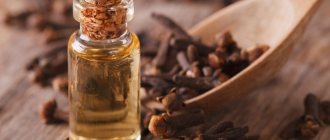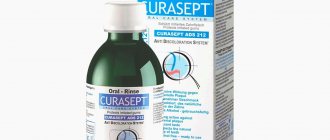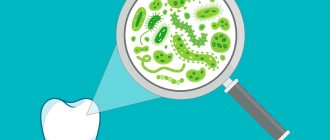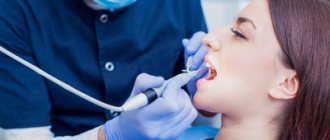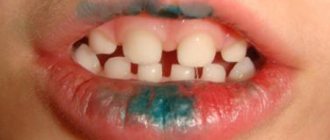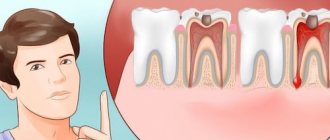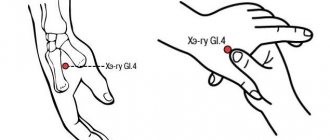It has long been known that toothache is one of the most unpleasant. Sometimes it occurs at the most inopportune moment, for example, at night, when going to the clinic is simply impossible. That is why folk remedies made from improvised ingredients are often used to solve such dental problems.
A real salvation from toothache can be rinsing your mouth with a solution based on soda and salt. The benefits of salt water have been known for a long time - this simple drug effectively disinfects the oral cavity, helps relieve swelling and pain. This and other popular mouthwashes will be discussed in the article.
Why is it useful to rinse your mouth with a soda-saline solution?
The soda-salt mixture does not treat diseases of the teeth, mucous membranes of the oral cavity and gum diseases such as caries, gingivitis, and periodontal disease. However, this handy remedy can help a person out if he has a toothache or swollen gums, but for some reason it is currently impossible to get to the dentist.
Baking soda (sodium bicarbonate) is used not only for cleaning dirty surfaces or in culinary production. A solution based on this product is actively used for rinsing and washing the mouth and teeth. Additional ingredients in the composition of the healing product may include iodine, salt and essential oils in various proportions. In some recipes, the usual table salt is replaced with sea salt, which is more expensive and has greater benefits.
The benefits of soda and soda-salt mixtures for the health of teeth and soft tissues of the oral cavity are multifaceted. This home remedy can help solve a whole range of dental problems because:
- Has an antimicrobial effect.
- Helps prevent harmful acids from destroying tooth enamel.
- Stops the inflammatory process.
- Helps make tooth pain less painful and the patient’s condition more comfortable.
- Can help get rid of tartar and plaque.
When preparing mixtures for rinsing the mouth and performing oral baths, the ingredients should be measured in strict accordance with the proportions recommended in the recipes in order to avoid burns of the oral mucosa, damage to the integrity of the enamel and other painful reactions.
How to treat periodontal disease and periodontitis
With the exception of local periodontitis caused by traumatic factors, both diseases are completely incurable, but timely diagnosis and proper treatment can transform the disease into a stable state and preserve teeth for many years.
The main thing in the treatment of periodontitis
- If there are traumatic factors, it is important to eliminate them as quickly as possible
- solve existing orthodontic problems
- Since in the case of periodontitis, poor hygiene is the main cause of the disease, it is necessary to carefully observe daily hygiene and, on the recommendation of a doctor, do professional oral hygiene
- lead a healthy lifestyle
Read the article To prevent periodontitis, do professional hygienic teeth cleaning 2 times a year.
If, in case of gingivitis, professional hygiene with the use of ultrasonic cleaning will help normalize the situation with the gums, then in the case of the formation of subgingival deposits and periodontal pockets, treatment using the Vector device is recommended, and possibly surgical intervention (closed/open curettage and flap operations).
Read the article Prevention and effective treatment with the Vector device
The main thing in the treatment of periodontal disease
- since often insufficient blood supply to periodontal tissue is associated with cardiovascular and endocrine diseases, it is necessary to begin treatment with a specialized specialist
- Hydromassage with an irrigator, finger massage of the gums and physiotherapy will help improve blood circulation
- it is very important to lead a healthy lifestyle
- Special attention should be paid to oral hygiene so that periodontal disease is not accompanied by inflammatory processes, which can significantly accelerate the destruction of bone tissue.
Since periodontitis and periodontal disease are accompanied by a loss of bone tissue that holds the teeth, lost teeth should be restored without delay so as not to create an increased chewing load on the remaining ones and to prevent free space in the dentition.
To stabilize the position of the teeth, splinting may be required, which will distribute the load more evenly across the dentition.
Contraindications to rinsing with soda-saline solution
A soda-salt solution for mouth rinsing, made in the correct proportions, is not capable of having a significant harmful effect. However, for some diseases and individual characteristics, a healing folk remedy can cause considerable harm to the patient’s health.
Young children should not rinse their mouths with soda-based products, even with severe toothache. Children under 3–4 years old do not yet understand the essence and technique of the procedure and can swallow a significant amount of liquid, which is why it is better to dip a cotton or gauze swab into the medicinal composition and help the baby treat the mucous membranes of the oral cavity by simply wiping.
The drug may cause harm if you have a traumatic brain injury, brain disease, or a predisposition to stroke. In addition, you can significantly worsen your health if you take it orally.
If a person is diagnosed with thyroid dysfunction, nephritis or tuberculosis, he should not add iodine to salt water. The same rule applies to pregnant and lactating women. You should not overuse mouth rinsing with soda, salt or iodine based mouthwash for nausea and vomiting.
Rules for preparing a soda-salt solution
A saline solution with soda for rinsing a sore tooth is prepared as follows: take a glass of moderately warm water (27–30 °C), and place 1 tsp in it. salt and soda, after which the bulk ingredients are stirred until completely dissolved. When the product is ready, rinse your mouth thoroughly for 1-2 minutes.
You can do it even simpler: take 200 ml of heated water and dilute 1 teaspoon of sodium chloride in it.
It is necessary to rinse your mouth immediately after diluting the ingredients, since cooled water can have the opposite effect, increasing pain.
What to prepare for rinsing gums at home?
Chamomile
A powerful natural antiseptic used to eliminate inflammation. Among herbs for rinsing gums, chamomile occupies a leading place.
How to use:
Pour 1 tablespoon into a glass of boiling water, let it brew for 40 minutes and rinse 3 times a day after meals.
Oak bark
Oak bark is an indispensable rinse for gums. Has an astringent and hemostatic effect.
How to use:
Pour 3 tablespoons of bark into a glass of boiling water, keep in a water bath for half an hour, strain, bring the volume to 200 milliliters with boiled water and rinse 5 times a day after meals.
Sage
Rinsing with sage has a pronounced anti-inflammatory effect.
How to use:
Pour 200 milliliters of boiling water over 1 tablespoon of leaves, leave for 40 minutes, rinse 3 times a day after meals.
Baking soda
A baking soda rinse for gums reduces pain and promotes healing.
How to use:
1 teaspoon per glass of boiled water. If your gums are inflamed, rinsing with soda should be done after eating, after brushing your teeth. Use immediately, do not store!
Salt
Rinsing gums with salt has a disinfecting effect.
How to use:
1 teaspoon of salt per 1 glass of boiled water. To enhance the medicinal effect, it is best to rinse with salt and soda at the same time!
5% iodine solution
Has an antimicrobial effect.
How to use:
To rinse your gums with iodine, one drop per glass of boiled water is enough. It is better if it is lightly salted, for example, sea salt.
Propolis
The waste product of bees relieves pain well and heals wounds.
How to use:
Propolis for rinsing gums is used in the form of an alcohol tincture: 30 drops per 1 glass of boiled water, rinse 3 times a day after meals.
If you don’t have time to brew herbs, you can just as easily use pharmaceutical alcohol tinctures made from them to rinse your gums.
Recipes for other mouth rinses
Any adult can prepare a solution of soda and salt for rinsing the mouth for tooth pain, since the necessary ingredients are available in almost every kitchen. But you need to keep in mind that to rinse your mouth for toothache, you can only use a fresh mixture of soda and water . You should not dilute large amounts of soda for future use.
Traditional medicine offers a huge number of recipes for solutions for rinsing the mouth, which include table or sea salt, iodine, hydrogen peroxide, and infusions of medicinal herbs.
If your tooth hurts
To eliminate toothache, you can use salt, soda and iodine. If a tooth hurts badly, it is useful to rinse it with diluted soda with the addition of these ingredients to enhance the healing effect. To properly make and use a healing home remedy, use these simple recommendations:
Before rinsing your mouth, you must thoroughly clean your teeth to remove dirt and food debris.- When preparing a liquid from salt, soda and iodine for rinsing a diseased tooth, the following proportions must be observed: 1 tsp. bulk substances, 2–3 drops of iodine component, 1 glass of moderately warm water.
- There is no need to use too cold or hot water to prepare the medicine, as it can aggravate the patient’s condition. Cold liquid can make your tooth ache even more, and boiling water can seriously injure your gums.
- You should especially carefully rinse your mouth with diluted soda with salt and iodine in the area where toothache is felt.
- In the process of rinsing a diseased tooth, portions of the soda-saline solution should be changed every 0.5 minutes, the total duration of the procedure is at least 4–5 minutes.
- The medicine should not be taken orally; after rinsing, the liquid should be spat out.
- There is no need to rinse your mouth with salt or iodine liquid after use.
- When preparing a product from salt, soda and iodine to relieve tooth pain in a child over 5 years old, different proportions should be used: 0.5 tsp per standard glass of water. salt and soda and one drop of iodine. It is important to explain to your baby what will happen if you take this product orally, and why the rinse solution must be spat out.
- The medicinal liquid must be diluted and used at least three times a day - after each meal. Reducing the interval will not help increase the effect.
Frequent use of aggressive rinsing solutions can cause harm in the form of drying out the mucous membranes of the oral cavity, increasing the sensitivity of the enamel and other negative consequences.
If your gums are inflamed
Soda solutions are useful for inflammation of the soft tissues of the oral cavity. The fact is that such folk remedies have an enhanced antibacterial effect, help prevent the development of infection, and reduce pain. For the same reason, this drug is used to treat the throat for sore throat, ARVI and other colds and infectious diseases.
To prepare a high-quality oral rinse, you need to properly dilute the ingredients. The proportions will be the same as when making a medicinal mixture to relieve tooth pain: 1 tsp. soda per 200 ml of warm water. The finished product will help reduce the activity of inflammation and also make the teeth a little whiter.
To increase the effectiveness of the soda remedy, you can use it not to rinse sore gums, but as a bath. And add 2-3 drops of iodine to it. To enhance the disinfecting effect, you can use not water, but a warm sage decoction.
Gum baths
Dentists say: in recent years, approaches to certain procedures have changed, in particular rinsing for diseases of the teeth and gums. What new do experts offer?
The story is told by Elena Vasilyevna Zoryan, Candidate of Medical Sciences, Associate Professor of the Department of General Dentistry and Anesthesiology of the Moscow State Medical and Dental University.
– Rinsing is a simple and familiar procedure. Could there really be any innovations in relation to it?
– Yes, no matter how surprising it sounds. Many of us take rinsing very lightly, in the traditional sense of the word, believing that the more often we do it, the better. This way you can clean the oral cavity and get rid of many harmful microorganisms that tend to settle there. This is of course true.
But the problem is much broader - the fact is that along with microbes we also wash away saliva. And it plays an important protective role and protects us from infection. In particular, it contains lysozyme, which itself has an antibacterial effect. As well as substances that inhibit the proliferation of various bacteria and other microorganisms. And by removing saliva, we lose all this protection.
In order not to be left alone with germs, you need to learn how to rinse your mouth correctly.
- How exactly?
– We usually do it this way: we put water in our mouth, rinse it, and then spit it out. This method is justified only in some situations, for example, when rinsing after eating. This allows you to clean your mouth and remove any remaining food. Or after brushing your teeth, when you need to wash off the toothpaste.
In cases where we use rinsing as a therapeutic procedure, we need to rinse differently. Take a solution containing the necessary medications into your mouth, hold it for a while on the side where there is inflammation or damage to the gum mucosa, and then spit it out. In medical parlance, this method of rinsing is called “oral baths.”
The temperature of the solution should be warm - about 40 degrees. Too hot water can cause an exacerbation of inflammation, and too cold water can narrow blood vessels and disrupt cell nutrition.
In one session, it is effective to do 5-7 rinses for 30-40 seconds. If the inflammation is in the acute stage, then it is advisable to rinse frequently. When the inflammation is relieved, 3-4 times a day is enough.
– There is another option for local treatment – applications. In what cases are they used and can they be a replacement for rinses?
– Applications are the application of a special ointment, gel and solution directly to the damaged area. They can be used either independently or in addition to rinses.
When treating small children, rinsing is not used. Due to their age, they cannot rinse their mouth; they simply take water and swallow it. Therefore, rinsing with medicinal solutions in the first years of life is not recommended; at best, irrigation is used. Applications are often a real way out of the situation. In this case, the doctor can select the dosage form - solution, gel, ointment - individually.
– Are there any other cases when rinsing is undesirable?
– If we are talking about rinsing with medications, then we need to look into each individual case. How does this drug work and for what purpose is it used in this case? Any drug can cause not only allergies, but also other side effects. Therefore, be careful and do not start using it without consulting your doctor.
This is especially true for rinsing with antibacterial, antiviral and antifungal agents. We often use antiseptics ourselves, such as chlorhexidine.
It is effective, but has a number of side effects. In particular, it causes staining of teeth, promotes the deposition of tartar and temporarily disrupts sensitivity and taste.
– At one time it was popular to rinse with an “iodine” solution: salt, soda, iodine, water. But then messages began to appear that this should not be done. What is the situation now?
– You should be careful with iodine. It is indeed a very good antiseptic, but not for everyone and not always useful.
For example, some people experience increased sensitivity to iodine even when first used. Therefore, before rinsing, especially for children, be sure to conduct a control test.
Iodine preparations should also be used with caution by those who have problems with the thyroid gland, as well as pregnant and lactating women.
– What rinses can you do yourself? For example, if a wound appears in the mouth, how to treat it?
– You can safely use herbal preparations – infusions and decoctions. Preparations of chamomile, sage, and oak bark have a good anti-inflammatory effect.
Complex preparations 5 are being created based on plant raw materials, which are convenient because they do not need to be prepared, like infusions and decoctions. For example, Rotokan. Dilute 5–10 drops in a glass of warm water and take baths two to three times a day.
– These remedies are safe, but they do not always help. Are there any more effective drugs?
– There are many such drugs, and dentists know about them. And more recently, a new drug for topical use has appeared - Parodontocide. This drug combines herbal and chemical components and has not only anti-inflammatory and analgesic, but also antibacterial and antifungal effects. This makes it highly effective against inflammation, bleeding gums, and diseases such as gingivitis and periodontitis. What sets Parodontocid apart from many other drugs used for topical use.
– For what diseases are rinses with Parodontocide recommended?
– First of all, this drug is prescribed for inflammation and bleeding of the gums, in the treatment of gingivitis, periodontitis and periodontal disease.
Periodontocide is used daily as a rinse of 15–20 drops in 1/3 glass of water in the morning and evening for 3 minutes. After rinsing the mouth, a few undiluted drops of the drug can be applied to the gums for subsequent massage in the direction from the gums to the top of the teeth. The course of treatment is 4 weeks, after which you should take a break.
It is also very effective for inflammatory diseases of the oral mucosa - stomatitis and tongue - glossitis.
It is known that diseases of the gums and mucous membranes cause a lot of inconvenience. In addition to pain and increased sensitivity, bad breath can often be bothersome. Periodontocide copes well with this problem, which also helps improve the quality of life.
– What about caries?
– On the one hand, if such a problem already exists, then you need to go to the dentist and treat your bad teeth. Rinsing alone is not enough.
But on the other hand, Parodontocid contains sodium fluoride, which forms an acid-resistant compound with calcium salts. In addition, fluoride preparations have a bactericidal effect against acid-forming microorganisms that contribute to the development of caries and strengthen tooth enamel.
– Is it possible to use Parodontocid for the purpose of prevention?
– Yes, this drug is definitely recommended to be used to prevent diseases. In some cases this is justified, for example after surgery.
Why is regular salt replaced with sea salt?
Some dentists advise taking baths and rinsing sore teeth with a solution of baking soda and sea salt. The fact is that this product contains an increased amount of iodine, which has an antimicrobial effect. In addition, this salt helps strengthen tooth enamel.
To prepare a healing solution for tooth pain, you need to take 1 tsp. soda and sea salt and dilute them with 250 ml of warm water. To strengthen the enamel of teeth, it is enough to rinse sensitive teeth with a mixture containing 1 small spoon of bulk product and half a glass of water.
To weaken the effect of pathogenic microbes living in the oral cavity and remove heavy odor, you can rinse your mouth with a solution of soda and hydrogen peroxide. To make the medicine, take 250 ml of heated water and add 3 tbsp. l. 3% peroxide and 1 tbsp. l. sodium bicarbonate without a slide. The mixture is thoroughly stirred and used for therapeutic rinsing of the mouth. It is not recommended to take the drug internally or use it for any other therapeutic purposes.
Despite the beneficial properties of salt, iodine and soda, medicinal mixtures based on them can only be used as first aid or auxiliary treatment. If acute pain or inflammation occurs, you should contact your dentist as soon as possible and begin therapy aimed at eliminating the cause of the disease.

